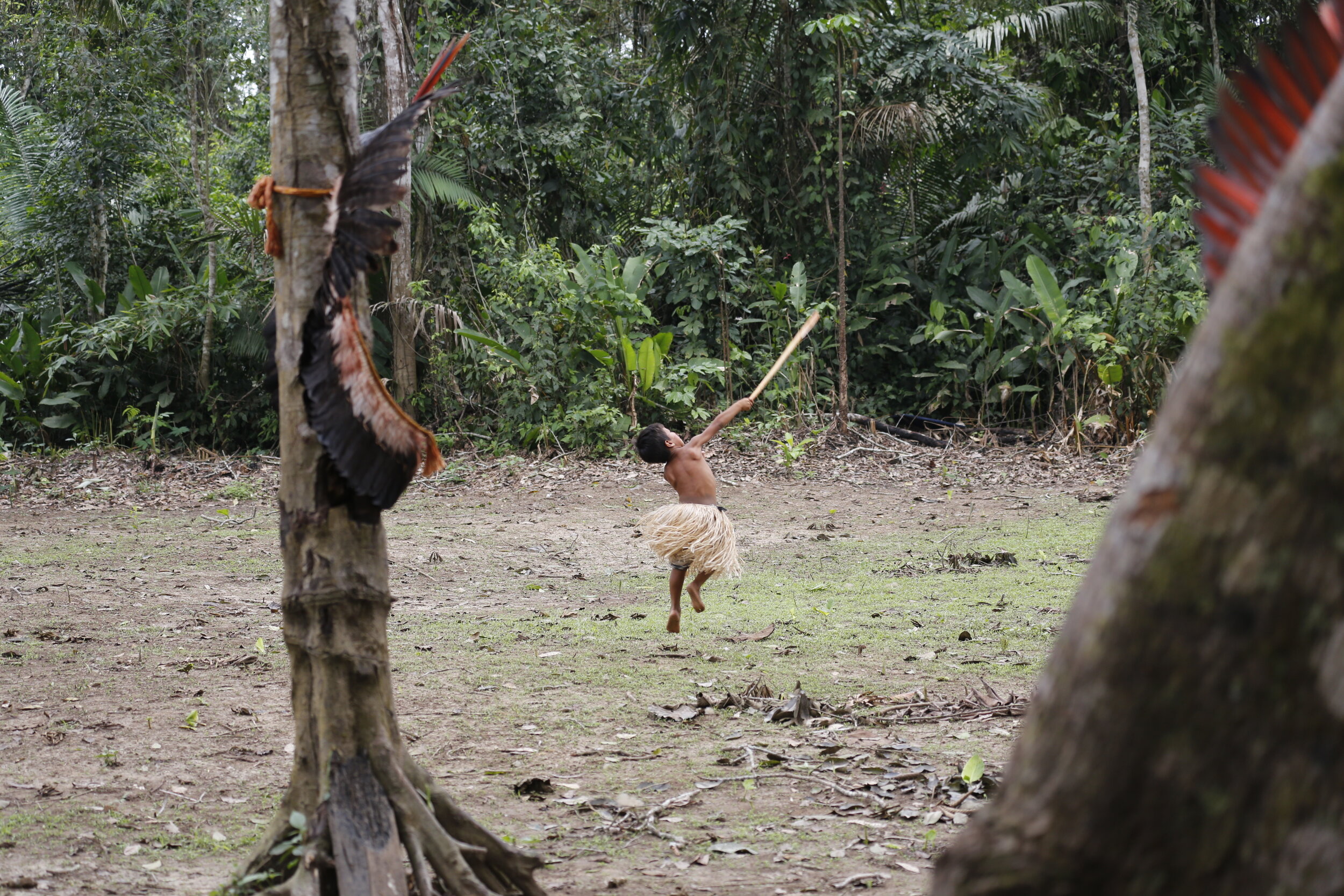Floating, absorbent, expansive and free: Lynette Wallworth’s 'Awavena'
/After experiencing the work Awavena (2018) by Lynette Wallworth at the Art Gallery of Western Australia in February, I reread a pamphlet by the Norwegian philosopher Arne Naess published to record a lecture given at Perth’s Murdoch University several decades earlier. Naess writes of the moment when he realised the correspondence, the equivalence, of human and animal pain. He had watched the accidental death of a flea that had fallen into a drop of acid he was observing under his microscope, and witnessed the enormous silent horror of its suffering.
I wanted to return to this text after an interval of 25 years, not because Wallworth’s Awavena conveys the suffering of the natural world, or even because of the Yawanawa, who are the film’s subject, but rather because I wanted to verify – in relation to it – my recollection that Naess had indeed felt that accident to be a moment of deep insight. I was also interested to recall that period of my life in Perth when I read, all those years ago, what is now called ecophilosophy.
The week before this viewing of Awavena, the gallery hosted a ‘long-table’ event to which a range of intellectuals engaged with eco- and First Nations activism had been invited for a discussion of the issues raised by Awavena within the local context. There was, at one point, that moment, typical of conservative Perth, when the intersection of its politics and the issues of Awavena came to the fore. Sampson McCracken, the Perth spokesperson for School Strike for Climate, proposed that more determined action should be taken against a number of oil and gas companies that have their headquarters in the city. There was then that silence that I recognised so well from decades past.
Awavena is, in a sense, two films. The first is in a more straightforward documentary mode, describing the relationship of Tata and Hushahu, the older shaman and the younger shamaness-to-be, with a feminist twist. The second shorter film principally aims to convey the literally hallucinatory experience of drinking a sacred tea and witnessing the Amazon forest while entranced by the tea’s effects.
This is what most impressed me: the sensation of being in space, floating among the atomised universe of the rainforest trees, while having the sense of being disembodied, of being part of those other living beings who, whether trees, animals or other people, are just as embodied as I. As with Naess’s killing of the flea, there was a definite trans-species identification, a kind of empathy.
This sensation of being particulate, floating, absorbent, expansive and free remained with me for subsequent days, even when I would drift off to sleep. This is what they mean, I suppose, by the cliché ‘feeling part of nature’. Yet I was haunted, too, by that familiar, local, pragmatic silence.
If Wallworth would like those who have experienced the virtual and real insights ‘gifted’ to us as viewers by Tata and Hushahu to act on the experience of this art, surely we need to be able to somehow articulate and confidently confront those aspects of our present reality – mining companies, local, national and global politics, and so on – that are now obviously incommensurate with life. We need to realise that First Nations are not that flea under the microscope’s lens.
Now we are all that silent screaming flea.
John Mateer, Perth
Lynette Wallworth’s Awavena was screened as part of the Perth Festival at the Art Gallery of Western Australia from 7 February until 2 March 2020. London’s Barbican is hoping to present Awavena in early 2021.






















